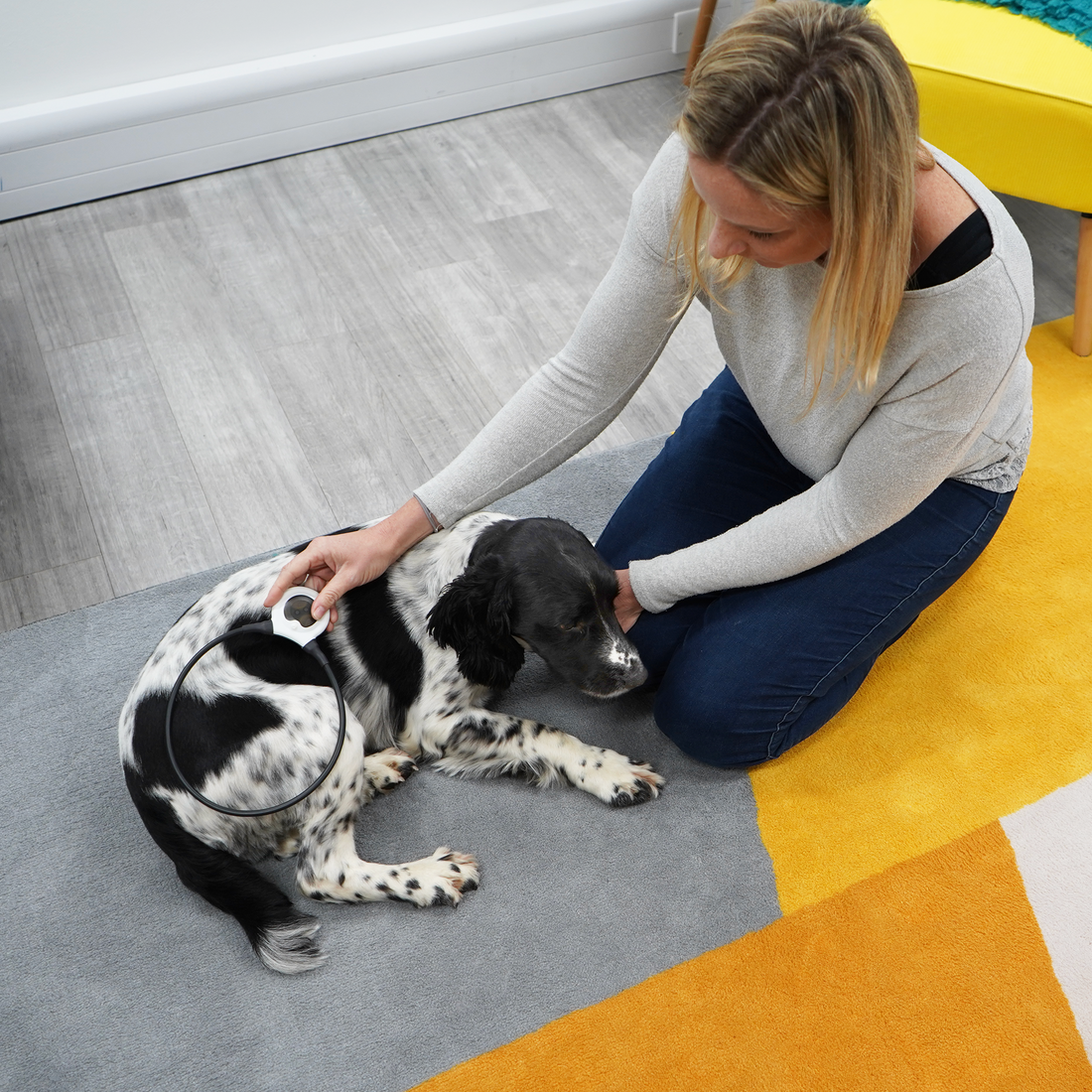As pet ownership rockets, with owners wanting and expecting more from their health providers, and as the human population increases, putting an ever-increasing demand on production animals, there is a huge need for veterinary medicine to be as effective and efficient as possible.
Innovation within veterinary medicine has come into its own in recent years, with more boundaries being pushed, as it is increasing obvious that animal health goes hand in hand with public health. The need for traceability and sustainability has never been more apparent in the light of recent health outbreaks. With a changing, warming climate we are being challenged in multiple ways, and science has had to provide solutions to ensure whole health. Expectation from clients to provide substantial care to their pets, who are valued family members, has driven forward new therapies as veterinary medicine techniques align with those in human medicine.
Health Innovation
Be it avian flu, swine flu, or a bat in a wet market – we are more aware than ever that animal health has a direct impact on human health. Disease in livestock has huge knock-on effects to the mental, physical and financial wellbeing of humans. Reducing the threat of disease with improved prevention strategies and effective treatment has resulted in some breakthrough advancements being made.
- Vaccines
Vaccines are essential in protecting against deadly and debilitating diseases. An effective vaccination strategy relies on enough of the population being vaccinated, so ensuring vaccines are cost effective and easy to use and store are paramount.
mRNA vaccines can be produced at a lower cost than standard vaccines. Heat resistant vaccines enable the vials to be kept at room temperature – a huge breakthrough for vaccines in developing countries, and ‘custom’ autogenous vaccines which target specific strains of pathogen on individual farms, are all now on the market, making big differences to populations.
- Antimicrobials
The threat of antimicrobial resistance is very real. Bacterial infections are currently treated with antimicrobials (also known as antibiotics) but as more strains of bacteria become resistant to more types of antimicrobials, alternative treatment options are becoming a necessity.
While veterinary professionals take great care with antibiotic use, other alternatives are being developed which show great promise. These include - ambient cold plasmas, immunotherapy, antimicrobial peptides and bacteriophages.
- Traceability
When faced with an outbreak of a disease it is essential to be able to trace individuals to stop further spread. Livestock have strict identification and movement tracking rules in place, systems which were tested throughout the foot and mouth pandemic. While many domestic animals in the UK have microchips, actually tracing individuals is difficult, and this was brough to attention following the recent equine herpes outbreak.
The evolution of digital tracking has led to Weatherby’s e-passport for all thoroughbreds in the racing industry. The FEI have developed HorseApp which offers traceability and monitoring of horse health of FEI horses. Equitrace is an app which shows an equine’s identification, location and health status, and is available for owners and veterinarians. This is likely to be just the start of portable, digital tracking of animals.
Pain Relief Innovation
With over 51 million pets in the UK alone, the role of the cat and dog has changed over the past few decades. Our pets are now valued members of the family, with many owners willing to spend more money and try more options to keep their pet healthy and happy. No owner likes to see their pet in pain, and alongside pain relief medication many are looking to alternative therapies and technology to help improve their companion’s comfort.
- Targeted Pulsed Electromagnetic Field (tPEMF) Therapy
A non-invasive, non-pharmaceutical option to stimulate the body’s own anti-inflammatory mechanisms. tPEMF works by increasing endothelial Nitric Oxide which activates anti-inflammatory cascades. Nitric Oxide also stimulates pathways which result in increased tissue repair.
Assisi have developed a ‘loop’ which emits tPEMF technology and can be used over specific areas of concern, such as joints in the case of osteoarthritis, or over surgical sites to encourage healing.
- Monoclonal Antibodies
Monoclonal antibodies are man-made antibodies that bind to a specific antigen. They are extremely targeted in that they are only effective against one particular substance. Widely used in human medicine, including for some cancers, monoclonal antibodies are now being used to treat osteoarthritic pain in dogs.
Bedinvetmab, a canine monoclonal antibody, targets Nerve Growth Factor (NGF). The inhibition of NGF mediated cell signalling has demonstrated to provide pain relief from osteoarthritis. Cats are being treated with frunevetmab, which woks via similar pathways.
- Stem Cell Therapy
A form of regenerative medicine, stem cell therapy can help repair damaged tissue and heal musculoskeletal injuries, hence improving quality of life. The procedure takes specific cells from the animal and harvests them to be reinjected into damaged sites. Due to the type of cells used - mesenchymal cells, these can develop the characteristics of the cells needed for the repair of tissue. Used widely in dogs and horses, stem cell therapy can provide great results when used in joint, tendon and ligament injuries.
Technology Innovation
As the world we live in continues to expand its technological and digital prowess, it is fitting that the veterinary world is also harnessing the advantages of technology progress. With increasing options available in monitoring and communication, opportunities for more efficient and precise treatment are arising. Increasing data collection aids in early diagnosis of conditions and offers individual care to large groups of animals.
- Wearable Devices
It is increasingly common to see ‘smart watches’ on our wrists. Clever devices that track our steps, heart rate and more. Wearable devices are now becoming more popular in animals too. Such devices can track the animal’s vital statistics such as heart rate, body temperature, their activity and behaviour. Used in cattle these allow individual animals with health issues to be identified before they affect the rest of the herd.
In pets, smart collars are being used to monitor activity, location and can even be used to monitor their sleep, temperature, body positions, pulse and heartrate variability.
- Biomarkers
Identifying parameters that are important in identifying certain disease, and monitoring them, can help predict which animals may suffer from the condition and allow for early intervention. This personalised and predictive process puts emphasis on preventative care over reactive care.
RenalTech have done just this – six laboratory parameters have been identified for cats at high risk of chronic kidney disease development. Using a blood or urine sample, coupled with the cat’s age, RenalTech uses artificial intelligence to compare data and indicate the cat’s likelihood of developing chronic kidney disease.
- Telemedicine
Ways that we communicate have evolved at a rapid pace over the past decade, with the recent pandemic further showcasing how digital correspondence can play a vital role in medical communication. In an online, instant world where consumers expect rapid service at their fingertips, these demands are also being placed onto veterinary care. Clients expect and want more, and multiple telemedicine companies have adapted to offer just this, impacting on how veterinary services are delivered.
Telemedicine is the use of digital communication to provide veterinary advice remotely. Various apps are on the market, which allow for correspondence with a vet via a smartphone or tablet - live chats and video calls are available over this platform. Telemedicine also covers instant messaging, phone calls and text messages.
Nutrition Innovation
As our understanding of how nutrition and gut health has an impact on immunity, the way we address nutrition is changing. More research is needed to fully understand this relationship but there is great promise and potential in using diet to manipulate gut health to improve immunity and reduce the need for other medicines such as antibiotics.
Using precision nutrition to improve animal health results in increased productivity, making the use of novel feeds an attractive option to livestock farmers.
- Probiotics
Already used widely in humans, probiotics are keen favourites in the equine world, with their use also gaining popularity in pets. The use of pre and pro biotics can help to influence the gut flora, promoting the presence of ‘good’ bacteria while reducing the ‘bad’ bacteria.
Creating a healthy intestinal environment is also beneficial to the environment. A lab in America has developed a probiotic ‘Fortis’ which reduces enteric methane formation in ruminants by 50%.
- Phytogenic Feed Additives
Phytogenic feed additives are substances of plant origin which are added to an animal’s diet with the aim of improving health and performance. Known to have a range of biologically active properties including antioxidant and anti-inflammatory effects, they show promise in promoting intestinal health and improving feed efficiency.
Each innovative system talked about in this article could be spoken about individually at much greater depth. This article highlights the range, scope and quantity of exciting innovation within the veterinary world. With sustainability and prevention of disease driving new ideas forward we are set to be in for a ground-breaking future.
First published in Veterinary Edge magazine, November 2021 https://www.theveterinaryedge.com/
With kind thanks to Teamwork Professionals Ltd.

